Sat 19 Feb 2005
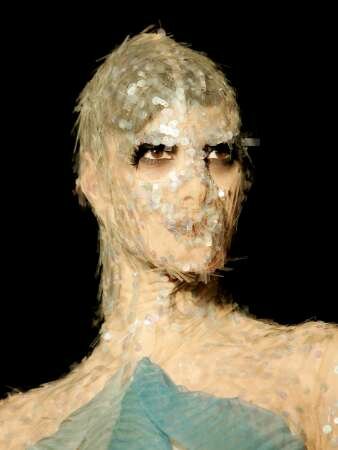
A model presents a creation from Italian fashion academy students for their Spring/Summer 2005 Haute Couture collection, during Rome’s Fashion Week, February 1, 2005. (REUTERS/Max Rossi)
Sat 19 Feb 2005

A model presents a creation from Italian fashion academy students for their Spring/Summer 2005 Haute Couture collection, during Rome’s Fashion Week, February 1, 2005. (REUTERS/Max Rossi)
Wed 29 Dec 2004
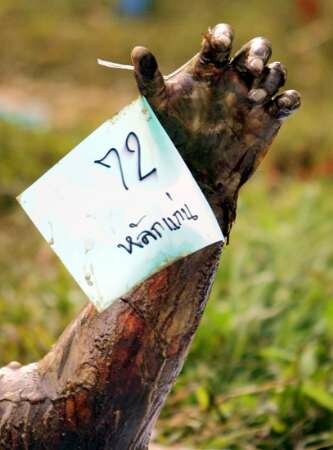
A tag is placed on around a deceased person’s wrist so the body can be identified among hundreds outside a temple in Thaplamu, nearly 100 km (62 miles) north of the Thai resort island of Phuket on December 29, 2004. Stricken countries on the Indian Ocean worked swiftly on Wednesday to bury thousands of bodies as experts warned disease could kill as many people as the 68,000 already dead from the violent crush of Sunday’s tsunami. REUTERS/Adrees Latif
Wed 22 Dec 2004
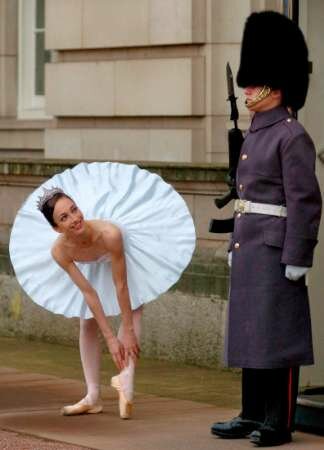
Simone Clarke (L), who plays the Sugar Plum Fairy in The Nutcracker, adjusts her ballet shoe ribbons as she stands beside a guard before a party held by Britain’s Duke of York for the ballet’s cast at Buckingham Palace in London, December 14, 2004. REUTERS/Ben Gurr/The Times/Pool
Fri 10 Dec 2004
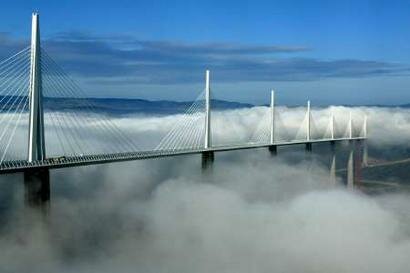
The Millau Viaduct, designed by the English architect Lord Norman Foster, crosses the cloud-covered valley of the river Tarn in Millau, December 9, 2004. The Millau Viaduct is composed of seven slender soaring pillars and becomes the highest bridge in the world at 343 meters, creating a direct route between Paris and the Mediterranean coast. The bridge will be inaugurated by French President Chirac at a ceremony December 14. REUTERS/Jean-Philippe Arles
Thu 4 Nov 2004
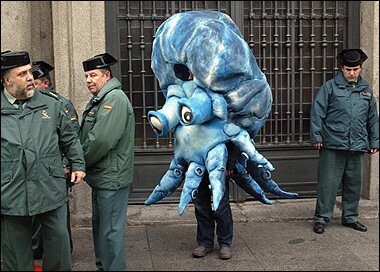
Octopus alert : Spanish Civil Guards stand near a Greenpeace activist dressed as an octopus during a protest in front of the Foreign Ministry in Madrid against bottom trawl fishing.
(AFP/Christophe Simon via )
Sat 30 Oct 2004

Marine iguana (Amblyrhynchus cristatus). Rábida Island
It seems to me, though I have no scientific knowledge in this matter, that these animals are the true representative of the saurians that have remained on earth until this day. The marine iguanas are very gentle and delicate in their behaviour, incapable of any aggression toward other animals. On the contrary, they even let others, like birds or lava lizards, climb on their back. They mingle easily with the cormorants, the sea lions, the fur seals, the pelicans, the boobies and others. When the birds are nervous they pick on the iguanas, who do not fight back. The young sea lions mock them and play at pulling the iguanas’ tails, especially while they are swimming. But the marine iguanas just let it go.(via Guardian Unlimited)
Fri 23 Jul 2004
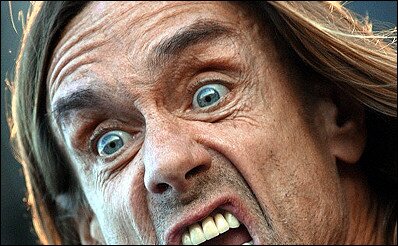
Iggy at it : US pop icon Iggy Pop performs at the three-day music ‘New Milenium festival’ in Santiago de Compostela, northwestern Spain.
(AFP/Miguel Riopa ))
Thu 3 Jun 2004
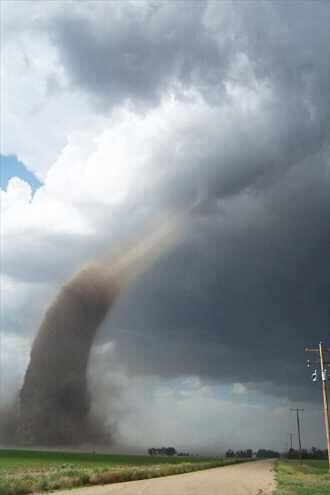
A tornado is too close for comfort as Jo Anne Grady of North Platte takes its picture May 29 near Gothenburg.
The North Platte (Nebraska) Telegraph reports:
On a bright, shiny afternoon May 29, Jo Anne and Wes Grady came upon one of nature’s most deadly phenomena: a tornado.
(more…)
Wed 2 Jun 2004
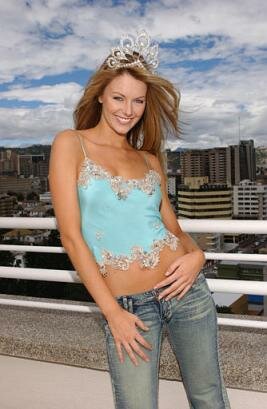
Newly-crowned Miss Universe 2004, Jennifer Hawkins, 20, of Sydney, Australia, poses in Quito, Ecuador Wednesday, June 2, 2004, on the first day of her year-long reign making appearances on behalf of the Miss Universe Organization, its sponsors and her official cause of HIV/AIDS awareness and education.
(AP Photo via /Miss Universe, Darren Decker)
Fri 28 May 2004
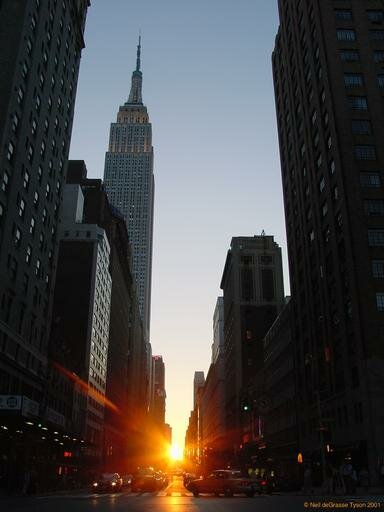
Credit & Copyright: Neil deGrasse Tyson (AMNH)
Explanation: Today, if it is clear, Manhattan will flood dramatically with sunlight just as the Sun sets precisely on the centerline of every street. Usually, the tall buildings that line the gridded streets of New York City’s tallest borough will hide the setting Sun. This effect makes Manhattan a type of modern Stonehenge, although only aligned to about 30 degrees east of north. Were Manhattan’s road grid perfectly aligned to east and west, today’s effect would occur on the Vernal and Autumnal Equinox, March 21 and September 21, the only two days that the Sun rises and sets due east and west. If today’s sunset is hidden by clouds do not despair — the same thing happens every May 28 and July 12. On none of these occasions, however, should you ever look directly at the Sun.
( Astronomy Picture of the Day via MetaFilter)
Fri 27 Feb 2004
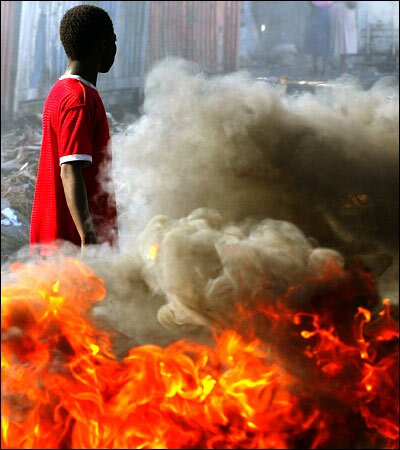
In Port-au-Prince, Haitians set up more blazing barricades to protect President Jean Bertrand Aristide. (Reuters)
LYDIA POLGREEN, The New York Times, Reports::
ORT-AU-PRINCE, Haiti, Feb. 27 With a rising panic creeping across Haiti’s capital, truckloads of armed men, many in ski masks, patrolled the city today, vowing to slaughter anyone who dared challenge the embattled presidency of Jean-Bertrand Aristide.
(more…)
Thu 8 Jan 2004
During the 1970s, magazines published in Communist Czechoslovakia were controlled by the state, like the majority of other enterprises. Very few good magazines were available and were difficult to get hold of, so people would borrow and exchange them when given the opportunity. This also applied to magazines aimed at young people, which was probably one of the reasons why almost everyone from my generation, when we get on to the subject of pinhole cameras, has fond memories of the cut-out paper camera known as Dirkon*, published in 1979 in the magazine ABC mladch techniků a přrodovědců [An ABC of Young Technicians and Natural Scientists].
Its creators, Martin Piln, Mirek Kolř and Richard Vykovsk, came up with a functional pinhole camera made of stiff paper, designed for 35 mm film, which resembles a real camera. It may not be the most practical of devices, but it works!
My first attempt at putting together a paper Dirkon a few years after it came out fell victim to a total lack of patience on my part. Today, twenty years later, I decided that I had to include this unusual pinhole camera in my collection. So I got hold of an old copy of ABC and set to work. This time I was successful, and here [is a] sample photograph. (Instructions at pinhole.cz via BoingBoing)
Tue 16 Dec 2003
By Robert Plotkin,
The Miami Herald, writes:
Digital technology attracts many photographers, but a small segment is repelled and takes refuge with Leica, a German maker of exquisite manual cameras.
Around the world, photojournalists with pretensions of art, those who dream of being accepted into the Magnum Photo Agency, carry a Leica in addition to their digital SLRs. These battered Leicas, loaded with black-and-white film, are for their personal work–work that will never appear in the publications for which they take pictures, but work that satisfies an artistic need.
(more…)
Tue 4 Mar 2003
Leica announces the new MP, “The LEICA MP is a tool. Made by hand, created for the photographers craft. Tailored to the decisive photographic parameters. In compact form, with clean design, clearly laid out. Unobtrusive, quiet, reliable. Concentrated technology for concentrated photography, without distraction by automation. For pictures that only a photographer can see, compose and record. Modern, because it captures the present. Current, because all its features have been optimized. Traditional, because it builds on the accumulated experiences of the pioneer in 35 mm camera construction. Not a photographic whim, but a camera for life.”
(more…)
Mon 17 Feb 2003
Dave Jenkins writes, “Steichen said, near the end of his long and distinguished career, “The function of photography is to explain man to man and each man to himself. That is no mean function.”
Documentary photography, with which the Leica camera has been most closely associated throughout its history, is about human beings and their doings. One cannot delve very far at all into the doings of human beings without running up against politics and religion, because they are two of the principal motivators of human action. It is disingenuous to think that photography can be divorced from these two great motivators.
From earliest times, many of the great photographers have been people who have had a point of view and have used photography to express it. In fact, it would be safe to say that is usually the reason they are regarded as great photographers. Their points of view have invariably been molded by politics and/or religion (or the lack of it, which is a religion of its own).
We must recognize and respect the power of political ideas in the work of other photographers, even if we do not ourselves espouse those beliefs. For example, I suspect that Rob Appleby and I are political opposites. But I respect the fact that he has a definite point of view and uses his photography to present it very effectively. I would hope to do as well in advancing my own point of view.
We may proclaim ourselves apolitical and may deeply wish to be so, yet, we cannot excape politics. It is integral to all human endeavor, photography not excepted. Instead of being contentious and flaming every one whose beliefs vary a hair’s breadth from our own, let’s use our cameras to express our own points of view about what’s right and what’s wrong, and what is valuable. Democracy thrives in the free marketplace of ideas, and truth will ultimately prevail even though it may be wilfully held down.”
Sun 2 Feb 2003
KATE BETTS, The New York Times, reports:
MADONNA and J.Lo depend on him. Annie Leibovitz and Steven Meisel won’t print a picture without him. Anna Wintour and Graydon Carter shell out many thousands of dollars a year for his services. He’s arguably one of the most powerful men in fashion, but he doesn’t sit in the front row or wear designer clothes, and you certainly won’t find him on the Style network coughing up deep thoughts about Gwen Stefani’s Super Bowl outfit.
Come to think of it, though, there is probably no one who has such a close knowledge of Gwen Stefani, down to the pores of her powdered cheek.
This behind-the-scenes magician, more intimate with celebrity flesh than a personal trainer or a masseur, is Pascal Dangin, the digital retoucher for fashion’s and Hollywood’s most famous photographers. Some refuse to work with anyone else. On the glossy side of the newsstand just this month, he tweaked the covers of W, Harper’s Bazaar and Allure.
(more…)